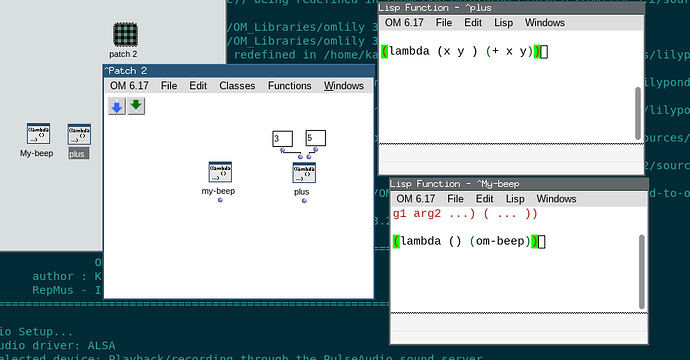Hi again OM developpers,
I have a request:
in some case, a very simple separate window such as warning window wich make possible to print on the screen some message (a string) for the user, in place of a print to the listener would be very appreciated.
For instance, with two (optional ?) buttons with arbitray text (it could be “Cancel” or “no” and “OK” or “yes” or so) which execute some user-defined function (such as “(abort)” and “(take it)” ) may make possible some usefull interaction with the user in to evaluate a part of a patch before evaluating all of it.
I know it’s easy to make in LW, but I don’t have LW to make it (too expensive !!!).
All te best,
Fred
PS:
Finally I found everyting here, it’s working:
Anyway a standard view/window GUI to operate decision in OM patch chain would probably make possible new ways to interact 


